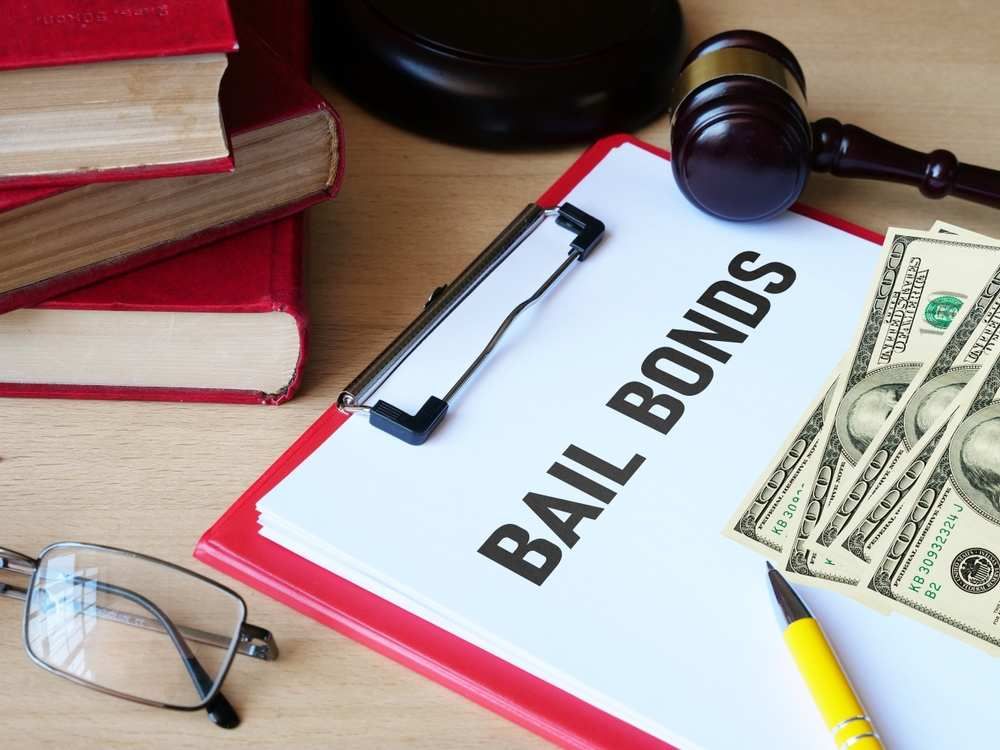A Comprehensive Check Out the Bail Bonds Process in Los Angeles
A Comprehensive Check Out the Bail Bonds Process in Los Angeles
Blog Article
Comprehending the Basics of Bail Bonds: What You Required to Know
Browsing the complexities of bail bonds is an essential facet of the legal system that can considerably affect the accused's trip via court process. The complexities of just how bail bonds run, the various kinds available, and the crucial factors to consider in choosing a trusted bail bondsman can be intimidating.
What Is Bail?
Bail is an economic arrangement that permits an individual implicated of a criminal activity to be released from safekeeping while waiting for trial. The primary objective of bail is to make sure that the defendant appears for future court procedures (Los Angeles Bail Bondsman). Normally set by a judge, the bail quantity differs depending on the nature of the criminal offense, the offender's criminal history, flight threat, and various other essential factors
When bail is given, the charged or an agent needs to pay a defined amount, which might be in cash or with a bail bond. In many cases, bail can be rejected completely, particularly for severe offenses or if the suspect presents a substantial risk to public safety. The idea of bail is rooted in the presumption of innocence, reinforcing the idea that individuals should not be penalized prior to a sentence.

Understanding Bail Bonds
A bail bond is a financial instrument that assists in the release of an implicated person from custodianship, working as a warranty for their look at future court days. This plan permits accuseds to preserve their flexibility while awaiting trial, decreasing the worries connected with incarceration. The bail bond procedure generally includes a third-party firm, referred to as a bondsman, who provides the necessary funds to the court on part of the charged.
Bail bonds been available in different types, consisting of surety bonds, residential or commercial property bonds, and money bonds, each with distinct requirements and effects. Surety bonds, one of the most usual kind, need a premium settlement, usually a percentage of the total bail amount, which is non-refundable. On the other hand, a home bond includes utilizing property as security, while money bonds necessitate the complete bail amount to be paid ahead of time.
Recognizing the nuances of bail bonds is important for accuseds and their families. It is important to comprehend the potential economic effects, including costs and responsibilities to the bail bondsmansman, along with the legal obligations linked to making sure court looks. Understanding of these elements aids in making educated decisions throughout a tough time.
Just How Bail Bonds Work
The process of securing a bail bond commonly involves a number of key actions that make sure the charged can regain their freedom while awaiting trial. Initially, the individual or their representative contacts a bondsman, who assesses the situation and the connected threats. The bail bondsman will require information regarding the accused, including the charges, the bail amount established by the court, and any kind of pertinent personal details.
Once the bail bondsman concurs to offer the bond, the accused or their rep needs to pay a non-refundable charge, normally a percentage of the complete bail amount. This charge makes up the bail bondsman for handling the monetary threat of guaranteeing the implicated shows up in court. In some instances, security may likewise be called for, such as home or beneficial properties, which functions as security for the bond.
After any security and the fee are prepared, the bail bondsman submits the required documents to the court. Upon authorization, the bail is published, and the accused is released from safekeeping. It is crucial for the charged to stick to all court dates and conditions, as failure to do so can result in the loss of the bond and potential legal repercussions.
Types of Bail Bonds
Various types of bail bonds are readily available to fit different situations and requirements. The most common kind is the guaranty bond, where a bond bondsman guarantees settlement of the complete bail quantity to the court for a non-refundable fee, generally around 10% of the bail. This setup enables offenders to secure their release without paying the whole bail upfront.
An additional type is the cash money bond, which calls for a co-signer or the defendant to pay the complete bail quantity in cash money straight to the court - Los Angeles Bail Bondsman. This choice is often chosen for reduced bail amounts, as it makes sure the cash is returned upon the defendant's look in all court process
Building bonds entail making use of property as security. In this situation, the court puts a lien on the building, which can be forfeited if the offender stops working to appear.
Finally, federal bail bonds are click here now especially developed for government cases, often including greater quantities and added complexities. Comprehending these different bail bond types is vital for offenders and their households in making informed decisions throughout a tough time.
Choosing a Bondsman
When selecting a bondsman, it is vital to take into consideration several key elements that can influence the overall experience and result. Evaluate the bail bondsman's credibility by investigating online reviews and obtaining referrals from relied on resources. A dependable bail bondsmansman will certainly have a background of professionalism and reliability and effective instances.

Many bail bondsmen bill a non-refundable cost, normally around 10% of the bail amount. Transparency in rates is a characteristic of a reliable bail bondsman.
Conclusion
In recap, understanding the basics of bail bonds is crucial for individuals involved in the lawful system. Bail functions as a monetary assurance of court look, while various kinds of bail bonds cater to various situations. Understanding the functional mechanisms of bail bonds and choosing a reliable bail bondsmansman can dramatically influence the total experience. An extensive analysis of readily available options makes published here sure informed decision-making, ultimately assisting in a smoother navigating through the intricacies of the lawful process.
The ins and outs of how bail bonds operate, the different kinds readily available, and the vital factors to consider in selecting a respectable bail bondsman can be discouraging. The bail bond process generally includes a third-party firm, recognized as a bail bondsman, who provides the required funds to the court on part of the charged.
The most common type is the surety bond, where a bail bondsman guarantees repayment of the complete bail quantity to the court in exchange for a non-refundable cost, typically around 10% of the bail. Bail offers as a financial assurance of court appearance, while various types of bail bonds provide to different situations. Comprehending the operational systems of bail bonds and selecting a credible bail bondsman can significantly affect the total experience.
Report this page